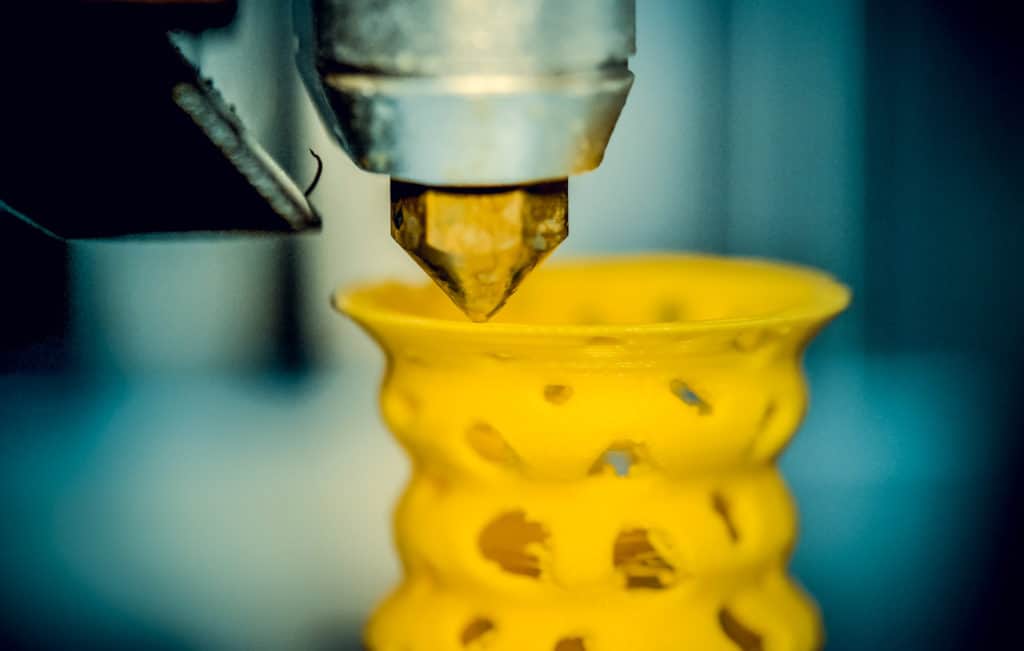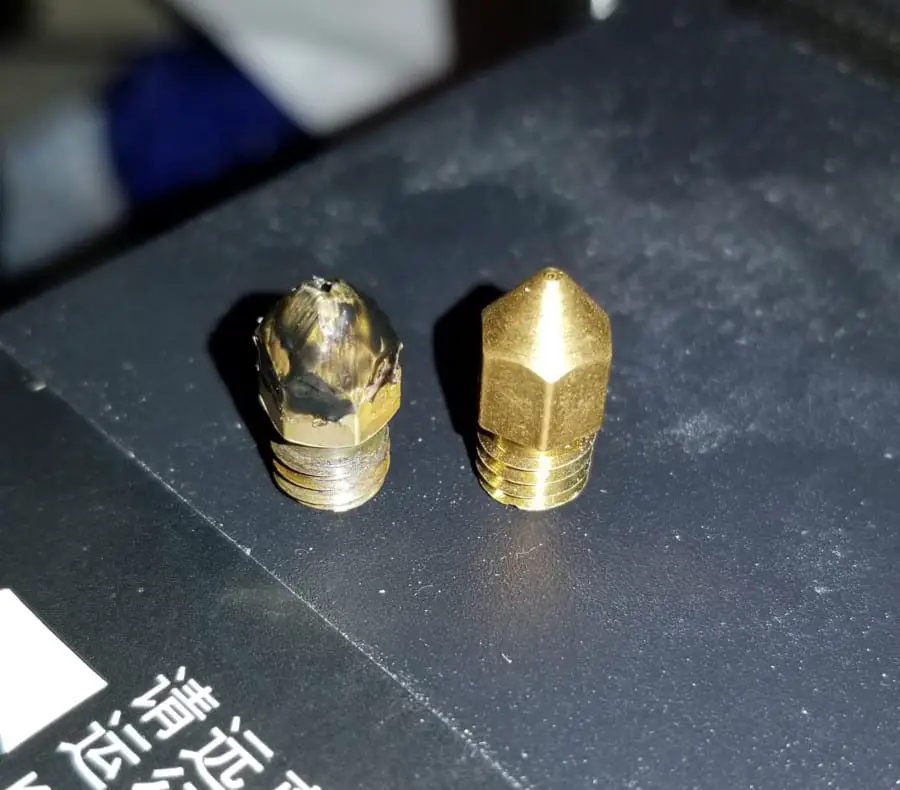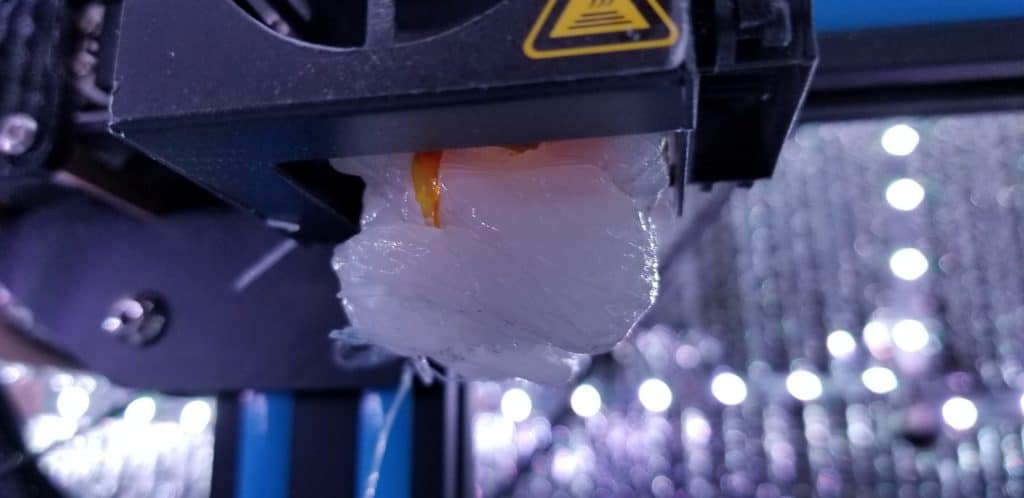
Although the nozzle of a 3D printer is small, it is a hugely important component of your printer. When I first started 3D printing, I had never even considered that I would eventually need to change my printer’s nozzle.
How often should you change your nozzle? As long as your nozzle isn’t damaged or worn out, you can use it for as long as you need it. Nozzles are pretty durable, as they can go through tons of heavy use without needing to be replaced.
With that in mind, you might want to make sure your nozzle hasn’t sustained any damage. Swapping to a different size nozzle could also make a big difference in your prints. Here is what you need to know about changing your nozzle.
Nozzle problems
I’ve ruined my share of nozzles in my years of 3D printing. Almost all of them were totally my fault. If nothing is done to damage the nozzle, their lifespan is extremely long.
Nozzles are such an important aspect of printing that even the slightest issue with them will cause your prints to turn out poorly. There are a few common issues that arise with nozzles.
Damage

The most common thing that can go wrong with a nozzle is that it becomes damaged in any way. Unfortunately, damage is the worst thing that can happen, as it’ll require that you completely change your nozzle.
Nozzle damage can come from either the user, or improper leveling of the bed. The leveling issue isn’t as likely, but it can still happen.
If the nozzle is too close to the bed, it will scrape against it. A glass bed will be scratched up, and can even cause the tip of the nozzle to become bent or scraped off.
This can be easily prevented by making sure that the bed is properly leveled before printing anything. Always watch your print at the start. If it starts to scrape, stop it immediately.
The issue that causes the most nozzle damage is when the user damages it with a tool. When the nozzle is warm, the metal becomes softer and can be damaged much more easily.
Always be careful when using tools around a heated nozzle. One time, I completely ruined an extruder by trying to clean excess plastic off of it with filament cutters.
I completely chopped the tip off, and I had no clue. For the next few days, my prints were turning out terribly. There were odd lines and patterns in every single layer, but only on one side of the print.
I attempted flipping the model around, and I found that the patterns were in the same spot as before. I went to my printer to see if I could spot the issue. Sure enough, I found that the nozzle had been clipped.
I easily swapped out my nozzle for another and everything was printing perfectly. I definitely will never attempt to scrape a nozzle like that again.
Clogs
A clogged nozzle is actually the best issue that can happen to your nozzle. Unless you got something majorly stuck inside it, there is almost always a fix for it.
Sometimes heating up your filament and pushing it through will be enough to push out the blockage. If it is, the filament will start to come out normally. Don’t force it though; if it doesn’t come out fairly easily, you should try another option.
If that doesn’t work, then attempt to use a nozzle unclogger if one came with your printer. It is just a small wire that you insert into a heated up nozzle, and it usually works wonders. Just wiggle it around and push it in as far as it can go.
If it worked, then the filament should start extruding once you remove the wire. If not then you could consider using a hair dryer or heat gun.
Always be careful when using a heat gun, as it could soften the metal too much and warp it. Never touch the nozzle after heating it either, but give it some time to cool before handling it.
If the heat gun works, then the clog should be burned out of the nozzle. If none of these methods work for you, then maybe your filament isn’t coming out for some reason. Here is another article I wrote on why your printer isn’t extruding.
Filament mishaps
Sometimes your filament can completely turn against you. When this happens to me, most of the time I never figure out why. This especially bad failure happened to me a couple months ago.

I really tried hard to get this off without damage. Unfortunately my terrible efforts damaged the hot-end beyond repair, so I had to order a new one.
If you get a small amount of filament on your nozzle, it’s not a big deal. Heat up your hot-end and use a brass wire brush to clean the excess off. Make sure it is brass, since a steel wire brush will damage your brass nozzle.
Always be sure to check on your print often. If it fails, it will waste your filament and possibly even ruin your hot-end.
Nozzle sizes
If you aren’t having any issues with your printer, then maybe you should consider changing your nozzle size. There are a lot of reasons why you should do this.
Larger nozzle
Faster print speeds can be achieved if a large nozzle is used. Switching to a 1mm nozzle, or even something crazy like a 4mm, will drastically reduce the amount of time you spend printing.
With large volume printers like the Creality CR-10 S5, you almost definitely want to increase your nozzle size. Besides having a reduced print time, large nozzles also clog much less. A larger diameter hole will make sure fewer things get lodged inside.
If you also need more durable prints, a larger nozzle will provide that as well. Having thicker layers promotes layer adhesion a lot more than the smaller nozzles would.
One downside of a larger nozzle is that the layer lines will be very prominent. If your print doesn’t need to be very precise, then this shouldn’t be an issue.
Smaller nozzle
Most people usually go with smaller nozzle at first. Not only does a small nozzle allow higher precision parts, but also it can give you better overhangs.
The smaller filament layers will cool faster than the larger ones can, resulting in better overhangs. The smaller layers aren’t as good for layer adhesion, but this is perfect for supports.
Supports printed with a smaller nozzle will be much easier to remove than supports printed with a large one. Things such as tabletop figures, jewelry, replacement parts, and mechanical prints will be much smoother and visually appealing.
The downsides for a small nozzle are longer print times and more clogging. If you can handle these, then a small nozzle is definitely worth it.
Nozzle upgrades
You can get other type of metals for extruders, not just in brass. Some other types include steel and ruby-tipped nozzles.
If you are only planning on using common filaments such as PLA or ABS, your standard brass nozzle will be fine. However, if you want to use special filaments such as glow-in-the-dark or metal filled, you’ll want to choose a stronger metal.
The more abrasive the filament is, the harder the metal nozzle you’ll need. The lifespan of your nozzle is dependent on what you put through it.
If you attempt to print crazy filament types with a brass nozzle, it’ll probably print decently well, but won’t last very long.
I’ve seen people saying that wood-filled filaments are abrasive, but using them on my brass nozzle hasn’t seemed to wear it down as far as I can tell. I may be wrong, as this is from my own experience, so don’t treat it as fact.
I haven’t used the wood filaments extensively either, so maybe extensive use would wear out the nozzle. All I can say is, the standard brass nozzle has suited me well.
Unless you are planning on getting some crazy filaments, the brass nozzle will do just fine for you. They are cheap and easy to replace, so always have a few of those on hand.
Conclusion
The nozzle will last a very long time if you treat it right. Make sure it’s the right tool to suit your choice of filament, and never scrape it with tools.
Swapping your nozzle entirely depends on your preference. As you learn more about printing, you’ll realize that your choice of nozzle can make a huge difference in your quality.
